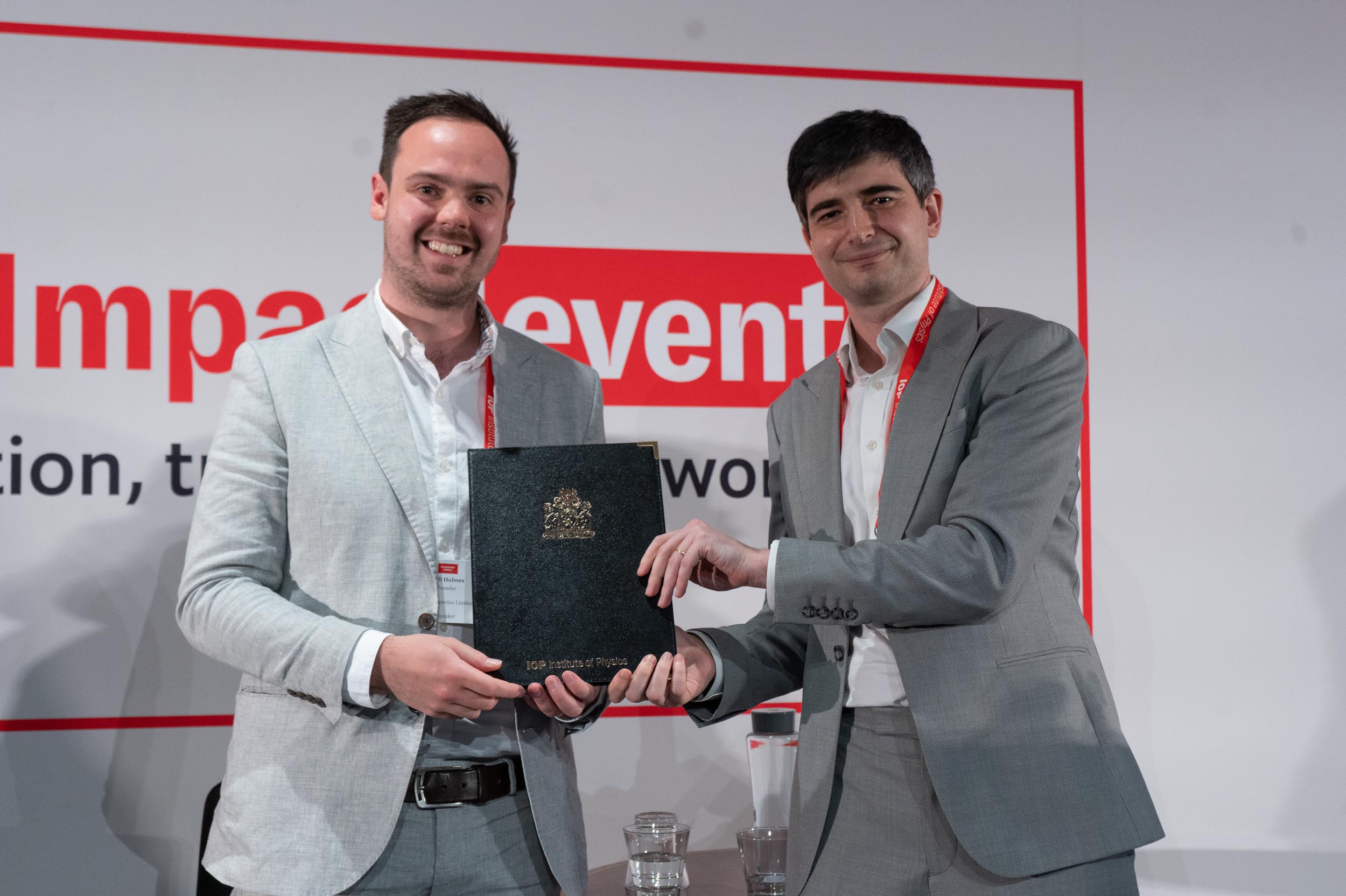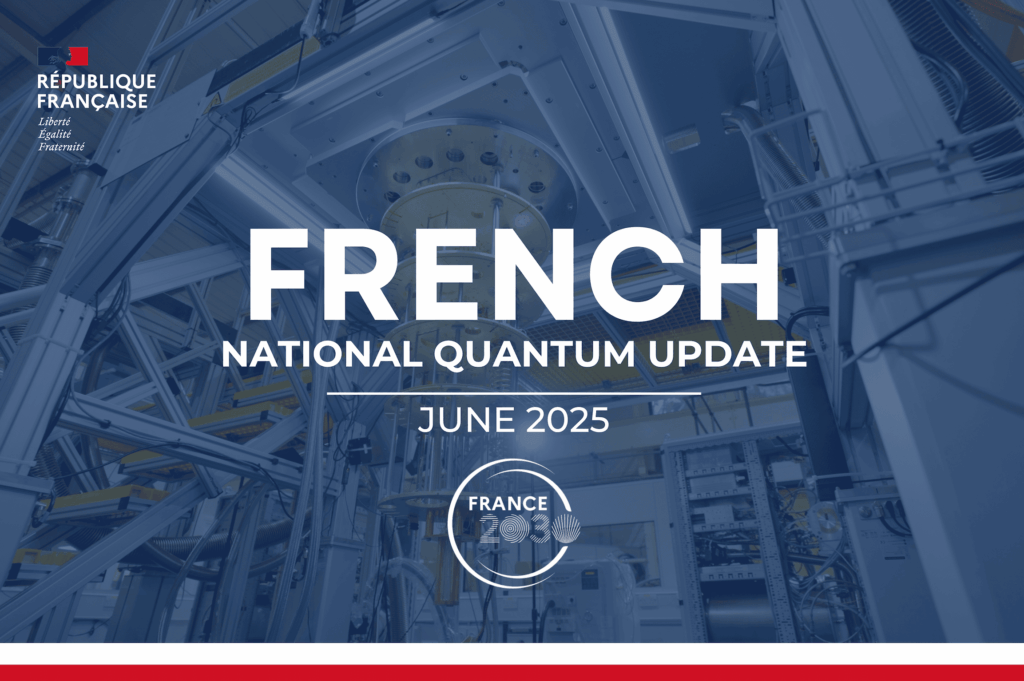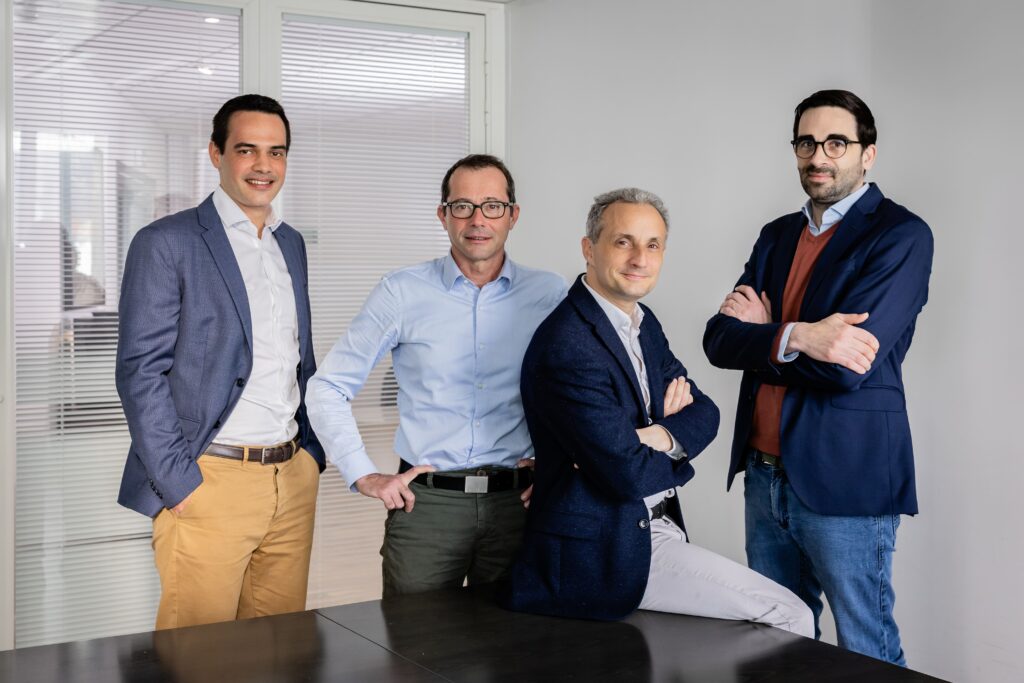Cerca Magnetics won the 2023 qBIG prize. Here’s a Q-and-A with the prize winners.
What does it mean to Cerca Magnetics to win the 2023 qBIG prize?
The quantum sector is growing rapidly, with over 200 businesses across the UK. Those companies span all areas of quantum science including sensing, imaging, communication, timing and computing. The application space is huge, ranging from geophysics, to climate change; telecommunications to global security; navigation to healthcare. So with this backdrop of cutting edge innovation across so many companies, to have been recognised by the quantum Business Innovation and Growth group at the Institute of Physics is both humbling and extremely exciting.
How will the prize fund and mentoring package from Quantum Exponential drive growth for Cerca Magnetics?

Cerca have enjoyed amazing success so far. We have been profitable in our first two years and we are selling quantum enabled brain imaging equipment to leading research institutions across the world. However, to realise the impact of our technology we need to deploy it in hospitals, and that means getting medical device approval. This is a costly process and Cerca don’t have all the necessary skills in house. The prize money, and the mentorship from Quantum Exponential, will be a genuine help. We can use the money to engage with consultants on critical aspects of medical device regulation, and likewise we believe Quantum Exponential will be able to provide paths to the right people who can, ultimately, help us bring our technology to those who will benefit most from it.
How will you make use of the Institute of Physics’ Accelerator workspace and associated benefits?
The IOP accelerator workspace is a fantastic facility. We will use this as a collaboration space, in particular to accelerate the work we are doing with national charity, Young Epilepsy. YE are based in Surrey and affiliated with Great Ormond Street Hospital; they have a Cerca scanner and we are working with them to scan epilepsy patients. The Accelerator space offers a useful place to meet up with YE clinicians and scientists, to share ideas, and monitor progress.
Can you tell us more about how Cerca Magnetics started and how the technology works?
The University of Nottingham has been developing brain imaging technology for 50 years. The work was started in the 1970’s by Sir Peter Mansfield, who went on to win a Nobel Prize for his contributions towards the development of MRI. Around 15 years ago, Nottingham started working with a technique called magnetoencephalography (MEG). MEG measures the magnetic fields that are generated by currents flowing through neural assemblies in the brain. Those fields can be used to reconstruct images of brain activity allowing us to see – moment-to-moment – how electrical activity in the brain evolves when we carry out mental tasks, and how that function is altered in disease.
In 2016, working with collaborators at University College London, we realised that novel types of quantum sensor, now called optically pumped magnetometers (OPMs), could be used to measure the brains magnetic field much more accurately than conventional sensors (superconducting quantum interference devices – SQUIDs). What’s more, being small and lightweight, OPMs are much more practical than SQUIDs (which typically need to be bathed in liquid helium to work). We partnered with a US atomic device company QuSpin, who had begun to make the first commercial OPMs, and together we constructed a first prototype OPM-MEG device in 2018. However, we quickly realised that the key to making this work was very high precision magnetic field control. We then partnered with a UK company called magnetic shields limited (MSL) who were leading the world in the development of magnetically shielded enclosures. Working together, we constructed a second prototype in 2020, and this time we realised that our system could outperform the state of the art. Lots of brain imaging groups around the world started to ask us to help build an OPM-MEG system. So this led to the birth of Cerca – in mid 2020. Cerca was formed as a joint venture between the University of Nottingham and MSL, working in partnership with QuSpin.
How does your technology compare to what is currently available on the market?
Because the SQUIDs used in conventional systems need cryogenic cooling, systems are large, with the sensors fixed into a large helmet and bathed in helium. In our system, the sensors are around the size of a Lego brick and can be mounted in a lightweight helmet. This means the sensors move with the head, so the system allows the subject to move freely whilst we measure brain activity. Also, the conventional system is “one-size-fits-all” and built for adults, meaning in children (whose heads are smaller) the sensors are much further from the head and so the signals are smaller. However, with our system, scanning children just means using a smaller size helmet. Finally, because the sensors don’t need to be cold, they get much closer to the head, and so we het larger signals from the brain and better spatial precision. All this also comes at a lower cost since we don’t need the cryogenic infrastructure.
What challenge(s) are you looking to solve?
OPM-MEG has many applications – from basic neuroscience to clinical application; from disorders that strike in childhood like epilepsy, to neurodegenerative disorders that affect older people like dementia; from concussion in professional sports people, to severe mental health problems like schizophrenia. In all of these disorders we know that there are MEG-based biomarkers which can either help us better understand the underlying neural substrates, or help us inform treatments. At Cerca, we are partnering with institutions across the globe, enabling them to begin working on these problems. However, we have a special interest in epilepsy. Epilepsy is a disorder which is characterised by abnormal electrical activity, and our system can map the brain areas generating that activity with unprecedented precision. Because we can tolerate movement whilst scanning, we can even scan patients during a seizure. We can also scan children. So in the short term, we have a huge opportunity to help people who are suffering with epilepsy, and we are partnering with National Charity Young Epilepsy, and clinicians at Great Ormond Street Hospital in London, to work on this.
How do you expect the industry will innovate in the next 5 years?
The global quantum sector has grown rapidly in recent years. In the UK this has been fuelled by the Quantum Hubs, which are very much the rock upon which Cerca, and many other industrial entities, have been founded. The Hubs not only bring together those working on similar areas of quantum science from multiple universities, but they also provide the interface between academia and industry. This makes for a potent “melting pot”, where those with questions meet those who provide the (quantum) solutions. The UK government recently announced the continuation of the Hub structure, and this promises another 5 years of partnerships and innovations. There are huge opportunities for companies, large and small, to get involved and – particularly in areas like quantum sensing or imaging – there are technologies that already work and are ready for deployment in the real world. It seems like the next 5 years will hopefully see a transition, where “quantum” leaves the laboratory bench, and starts to be integrated in our communities to solve real life problems.
Which brands/leaders in the field inspire you and the team
At Cerca what inspires the team is to see the way in which our technology is being used by our end users. We now have multiple systems in the field, being used for cutting edge neuroscience – a good example is our system at Sick Kids Hospital in Toronto. The system was installed in mid 2020 and is now being used in children – to map the neurodevelopmental trajectory of brain networks in healthy children, and how that trajectory diverges in disease. The Toronto team have been scanning children down to age 1, something that is exceptionally hard to do with conventional technology. To see quantum technology used in this way, addressing real world challenges, is inspirational!
What’s next for Cerca Magnetics?
We know OPM-MEG can do amazing things but to deploy it in hospitals requires medical device approval. This is the next big challenge for Cerca. Luckily, we have been fortunate enough to get funding from Innovate UK to help do this, and our (ambitious) timeline is to amass the data we need in the next three years.
Image: qBIG prize winner pic of the winner, Niall Holmes (left) and IOP Director of Science, Innovation and Skills, Louis Barson (right). Credit: The Economist at the Economist’s Commercialising Quantum Global 2023
If you found this article to be informative, you can explore more current quantum news here, exclusives, interviews, and podcasts.
















